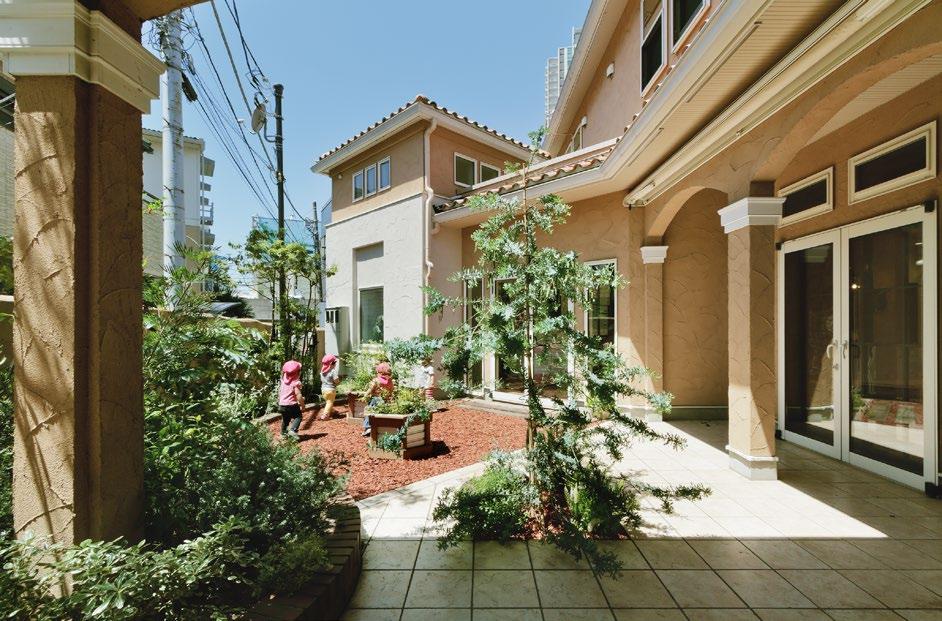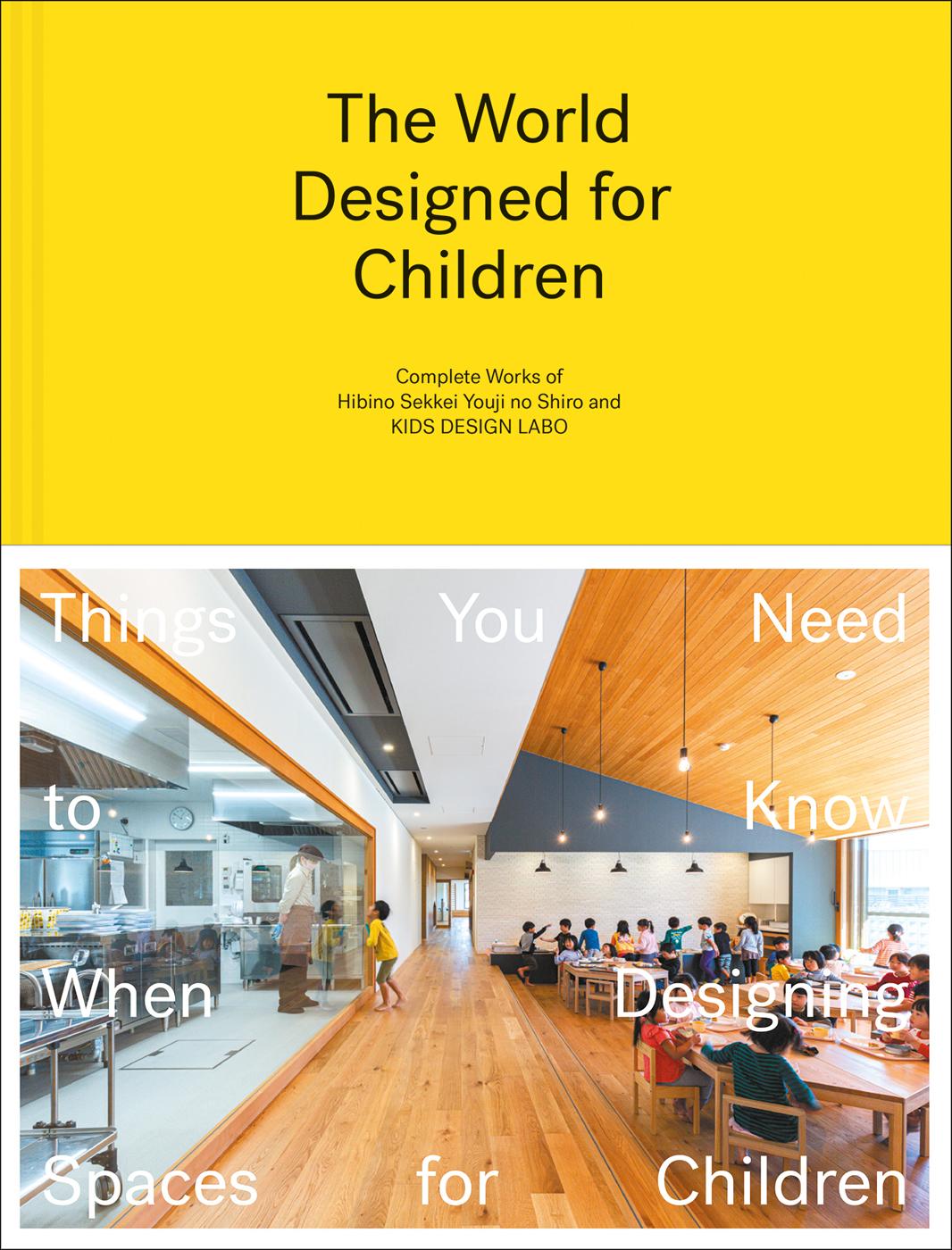

Chapter 1 Places for Children
30 What We Value in Children’s Spaces
33 Theme 1 Suburbs: Seek Inspiration from the Surroundings 34 AM Kindergarten and Nursery
A nursery that boosts exercise levels during play 40 HZ Kindergarten and Nursery
Learning from the wisdom of local building traditions 46 NFB Nursery
A nursery balanced with an industrial and natural landscape 52 IZY Kindergarten and Nursery
A traditional yet modern preschool building that blends in with a temple precinct 56 OB Kindergarten and Nursery
A structure that basks in bountiful nature
A nursery with a woodland landscape 64 FS Kindergarten and Nursery A preschool that brings people and nature together
69 Theme 2 City: View Buildings as Part of the Neighborhood
70 D1 Kindergarten and Nursery
An atrium that evokes the passage of time and seasons 76 AN Kindergarten
A nursery that is a hub where the community can interact
Nursery Recreating classic sceneries of children at play
EZ Kindergarten and Nursery
A preschool that evokes experiences of the mountains 92 KM Kindergarten and Nursery A nursery with active play features despite a limited area
LKC Nursery A nursery where the community can interact
101 Theme 3 Interior Projects: Bring Nature Indoors 102 CLC Beijing A flexible modular system that can be adapted to the curriculum
M, N Nursery An urban space designed for both kids and grown-ups
113 Theme 4 Renovation: Renovate with Social Evolution in Mind 114 ATM Kindergarten and Nursery A space where children and locals of all ages can interact
120
Primary and Secondary School A primary and secondary school recreated from a closed-down structure
MK-S Nursery A base created from a residential building with an attached shop 130 QKK Nursery A nursery school with a garden that stimulates children’s senses
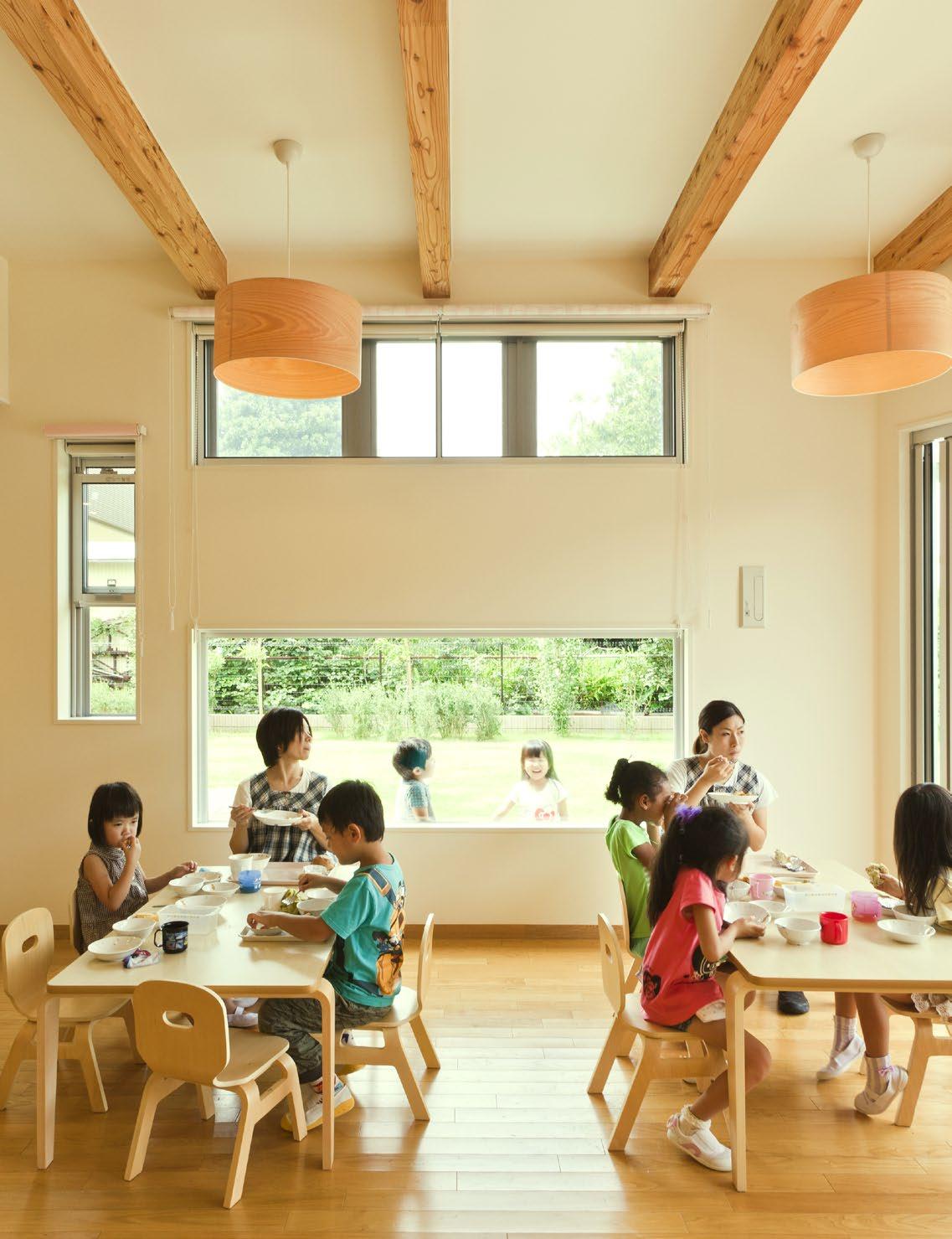
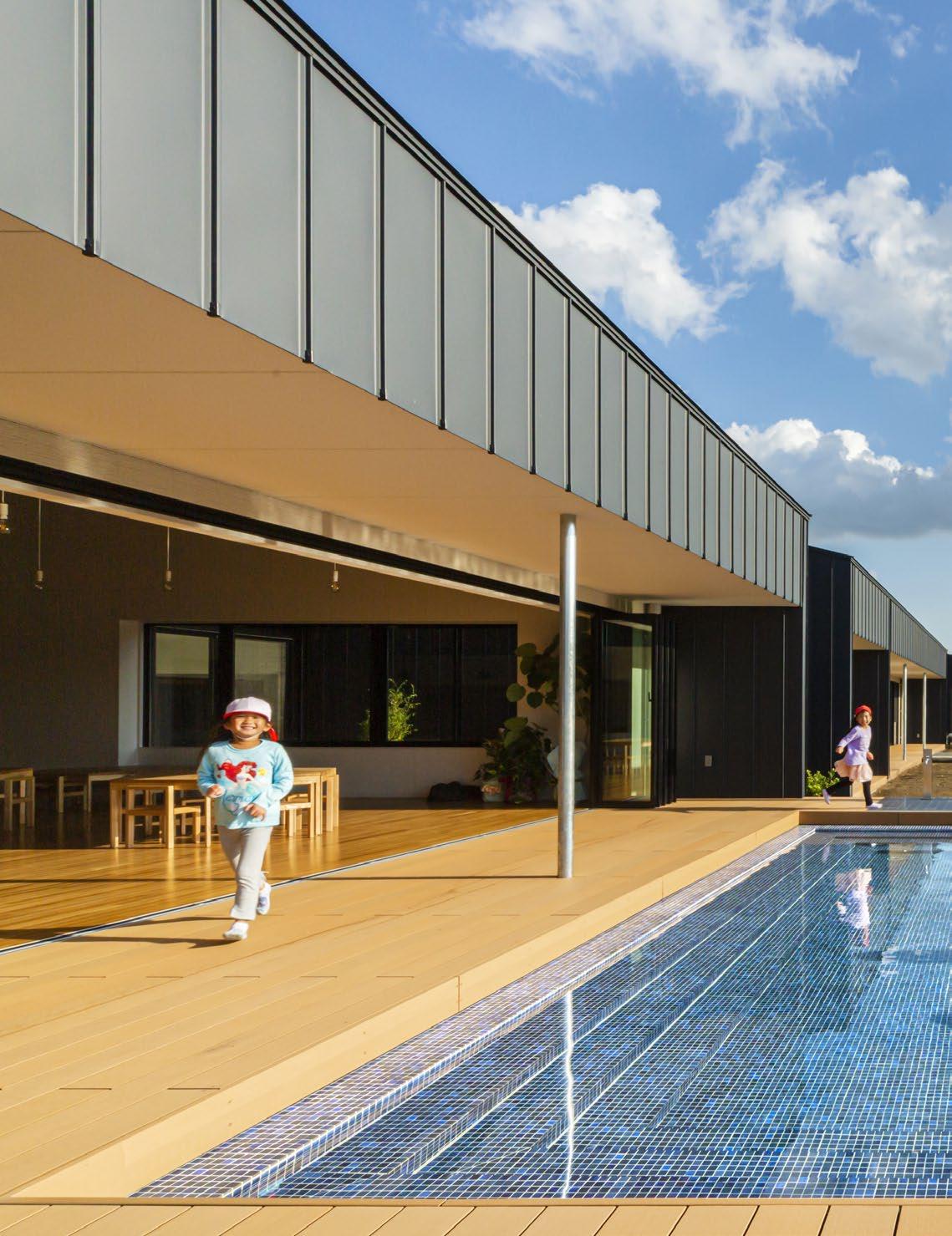
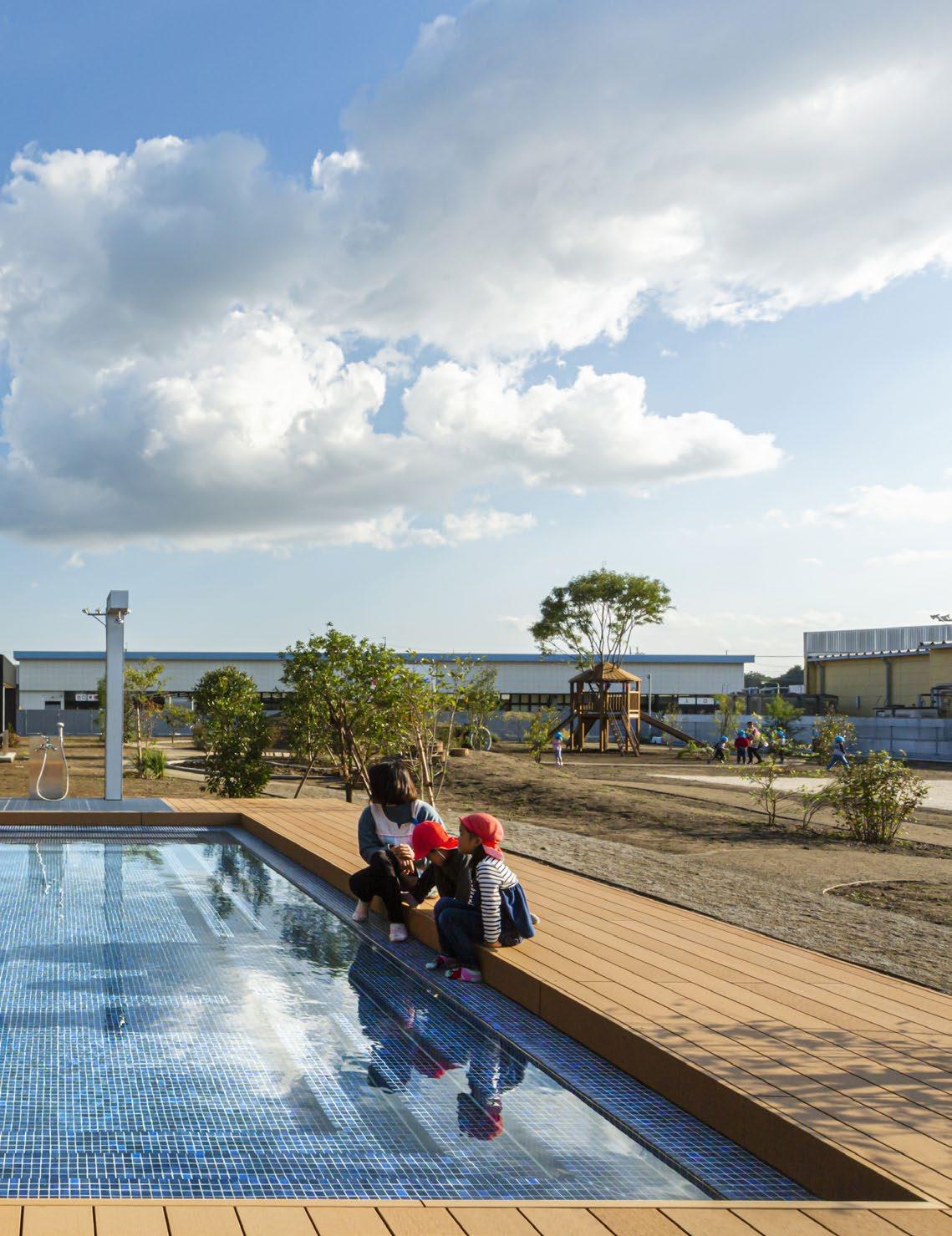
OM Nursery, Ibaraki, Japan, Photo by Toshinari Soga
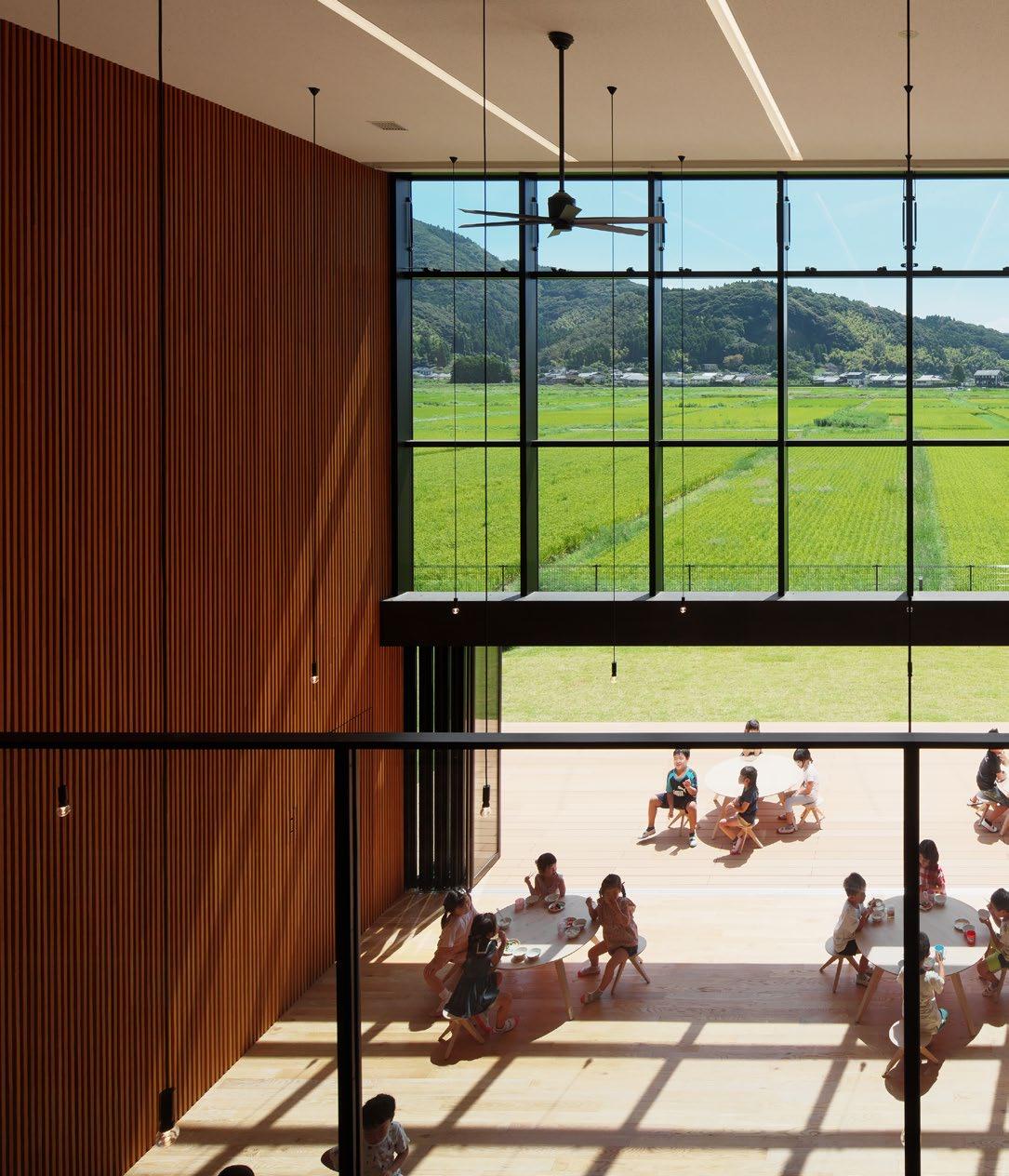
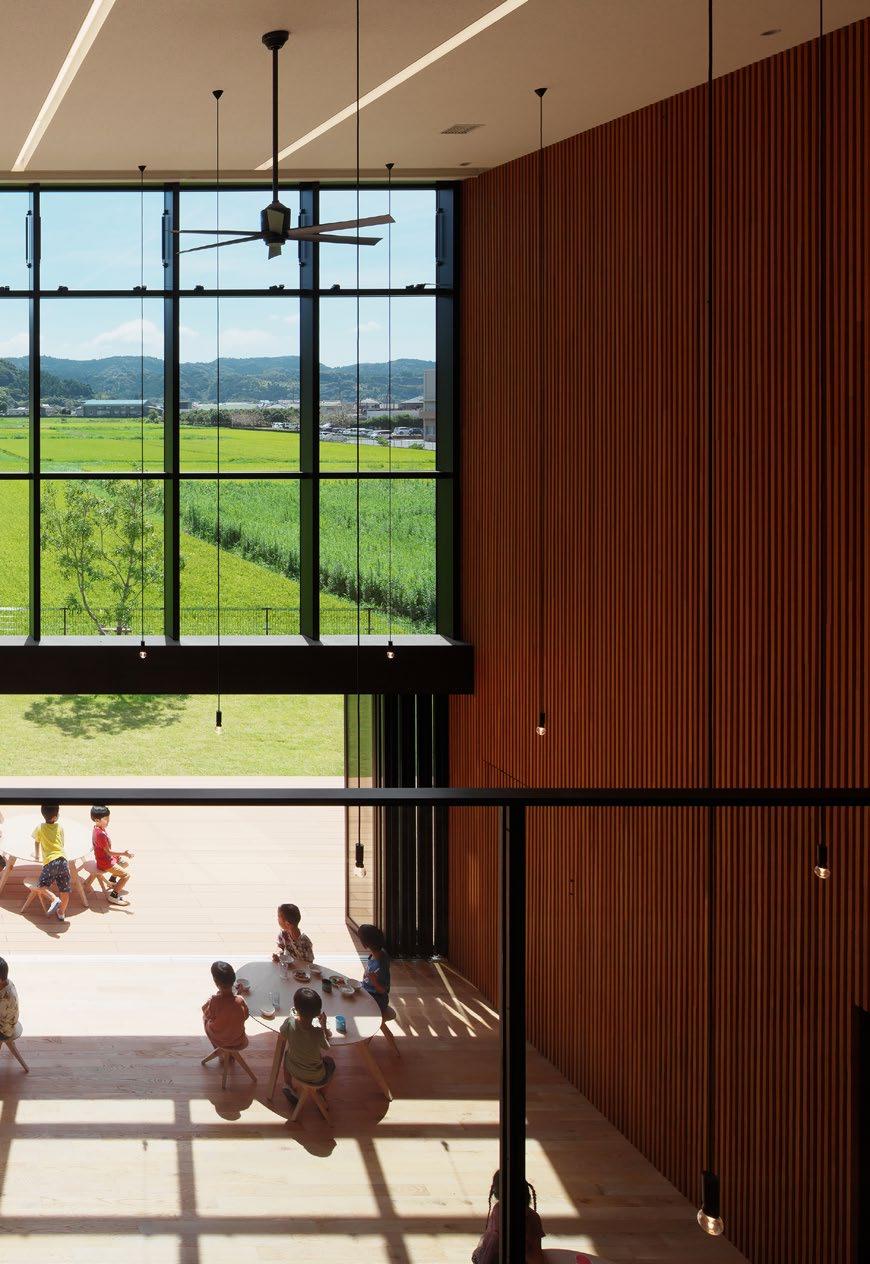
KN Kindergarten and Nursery, Kagoshima, Japan, Photo by Ryuji Inoue
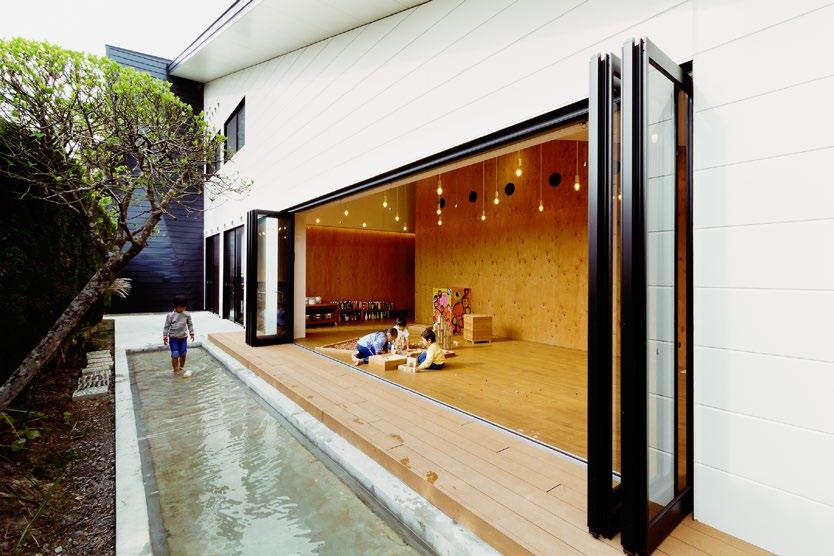
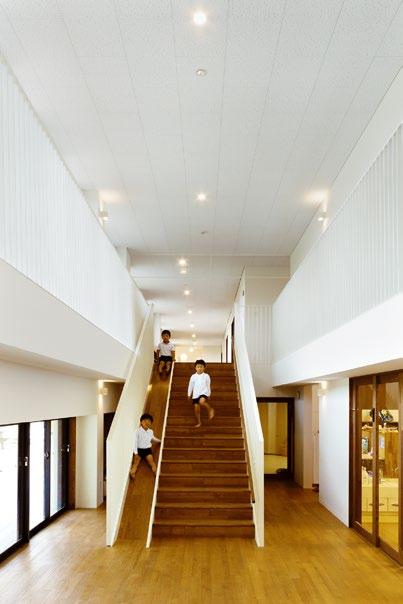
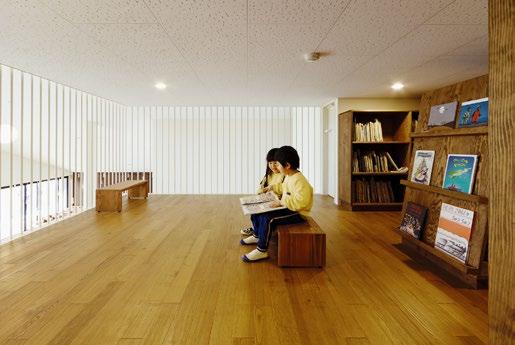
Library
A shallow pool that collects rainwater
A slide installed along the staircase
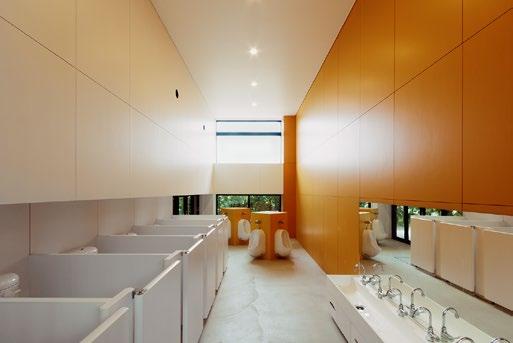
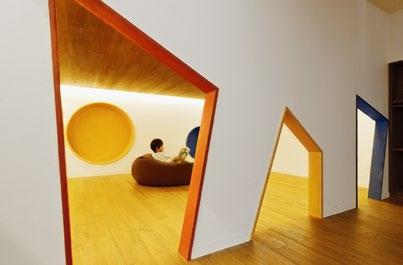
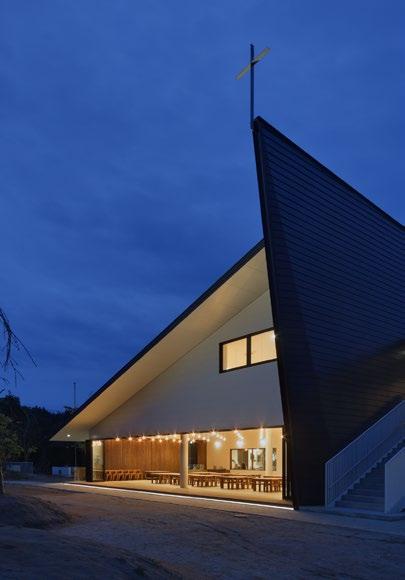
The children’s restroom has a view of the outdoor garden
Night view
FS Kindergarten and Nursery
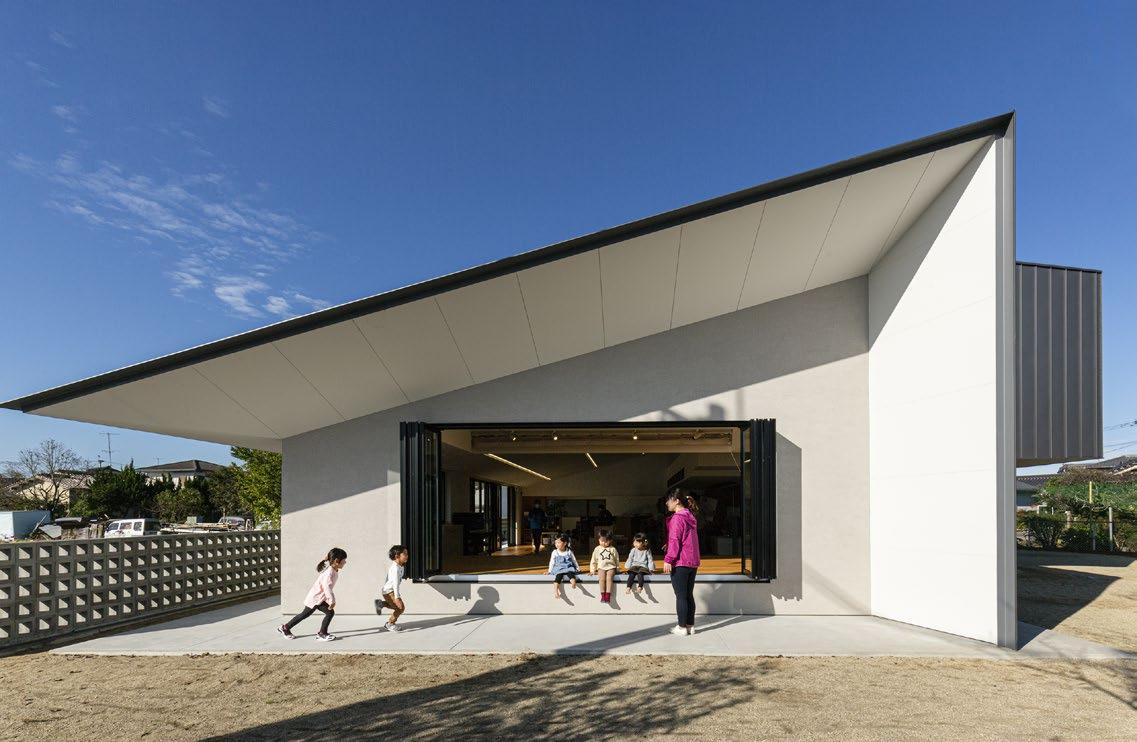
completion: 2020
area: 7,147 ft² (664 m²)
photography:
15th Kids Design Award
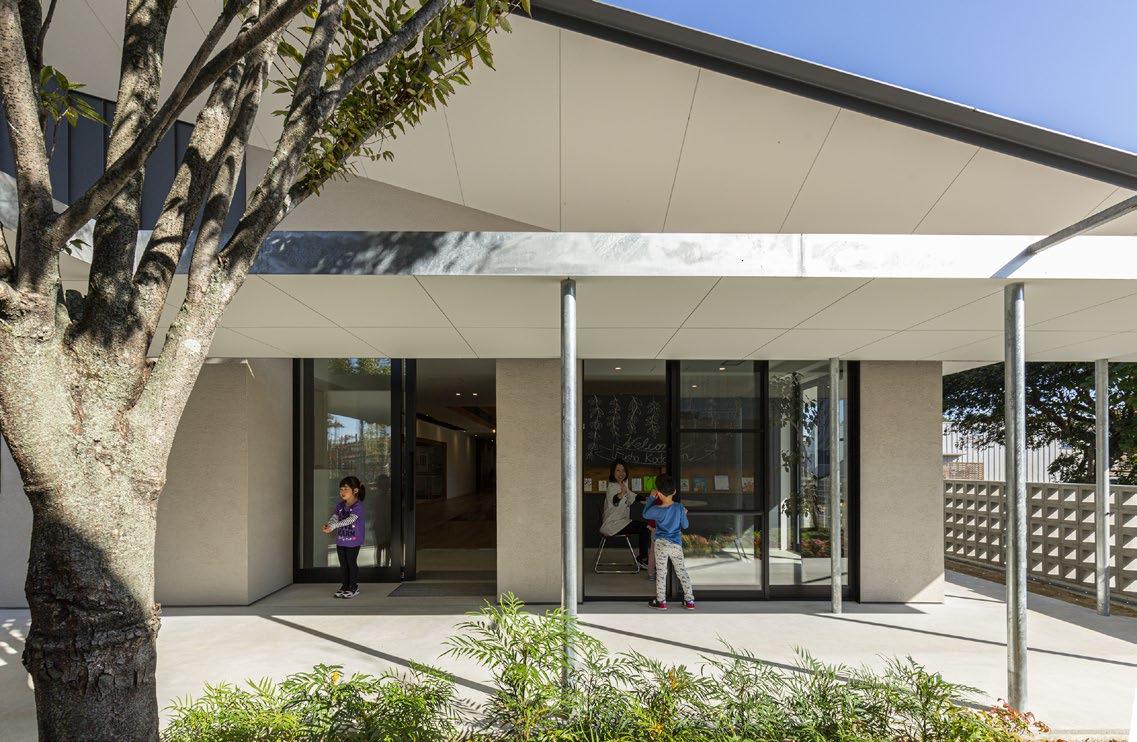
Oita, Japan
Toshinari Soga / studio BAUHAUS
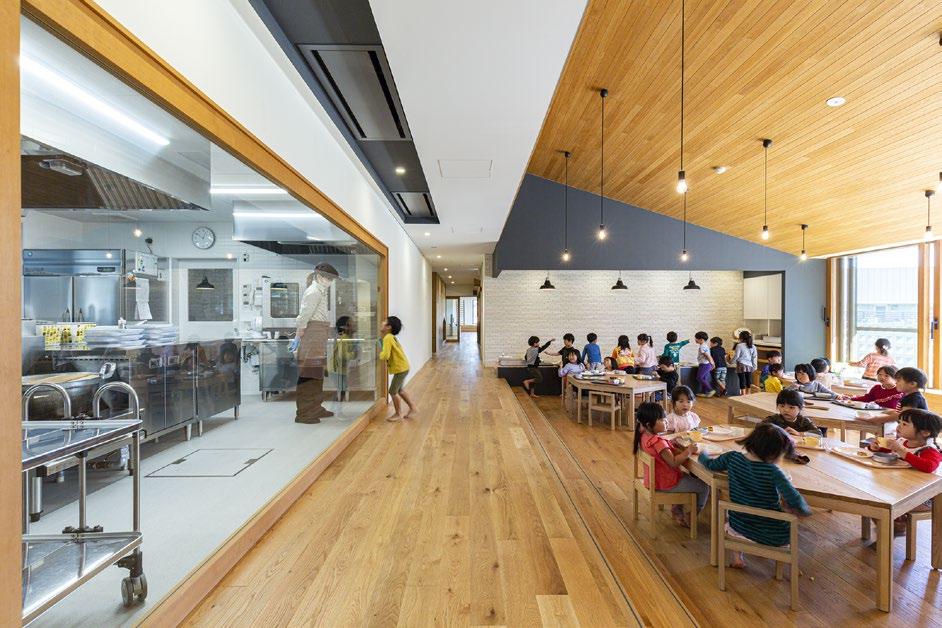
A preschool that brings people and nature together
This preschool is located in Northern Kyushu of Oita, Japan, which is a region abundant in greenery. The new building, which replaces the old one, is designed such that children can enjoy the beauty of nature while indoors. The building is covered with a sheet-like roof that resembles a tarp, with trees growing through it. Various natural materials and the colors of trees and foliage are used for the interiors. As the trees provide shade, the sunrays that peek through the branches create glimmering light patterns on surfaces.
With fewer children playing outdoors these days, good’ole coutry camaraderie and the nuances of a country lifestyle are slowly disappearing. On top of that, the increasing numbers of nuclear families have also diminished extents of human interactions, even in the surbubs. Accounting for this, the buildings are designed to bring people together and help create connections. One example is the glass-enclosed kitchen that allow children to interact with the staff and also get a glimpse of how their meals are prepared.
Dining room with a full view of the kitchen
A comfortable and all-weather play space is created under the large eaves Exterior view
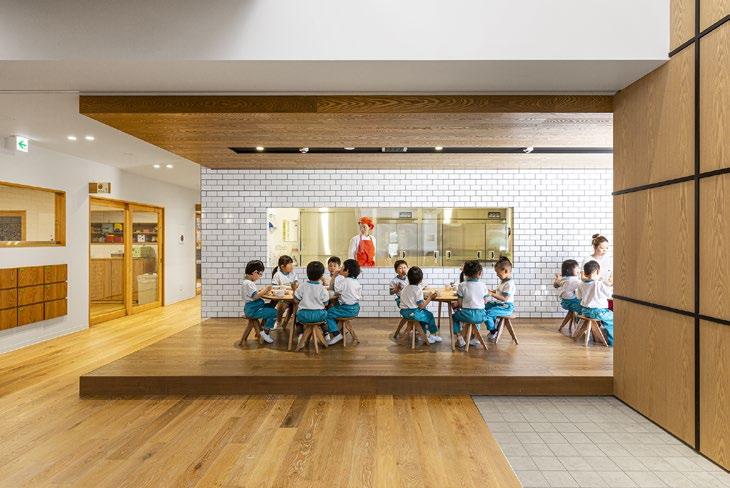
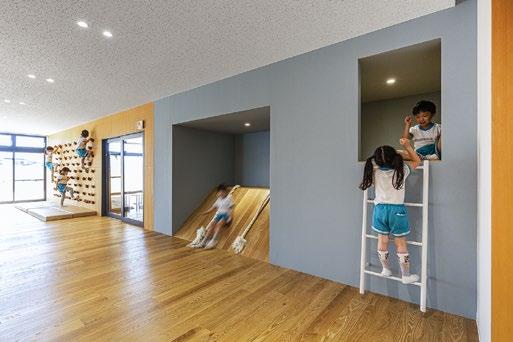
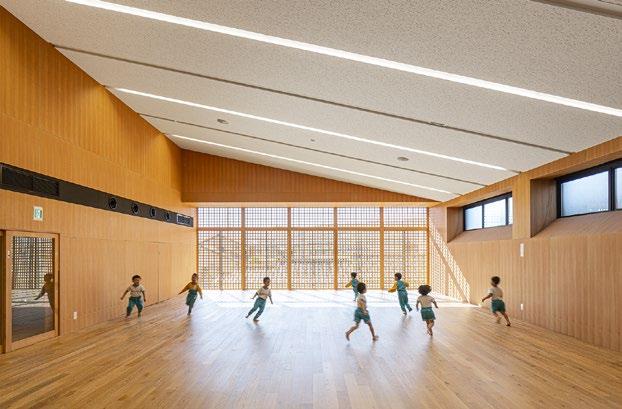
Hall
A long wall that encourages children to be creative and active
Dining room
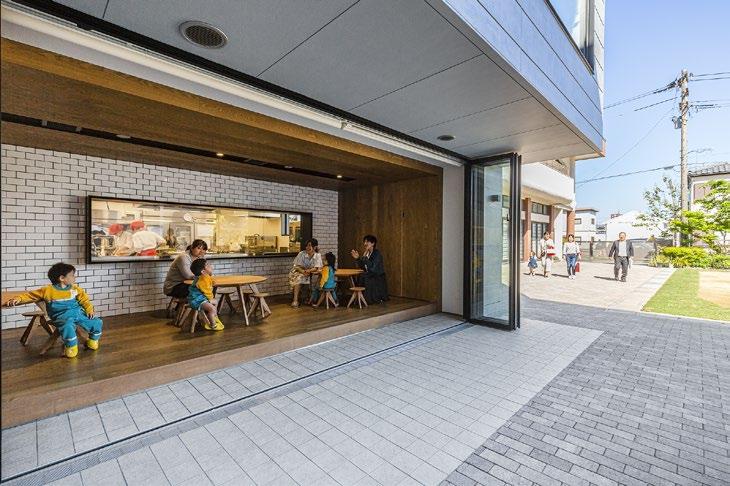
MK-S Nursery
Kanagawa, Japan
completion: 2017
area: 1,711 ft² (159 m²)
photography: Kenjiro Yoshimi / studio BAUHAUS
Finalist, Architizer A+Awards 2018 / 12th Kids Design Award
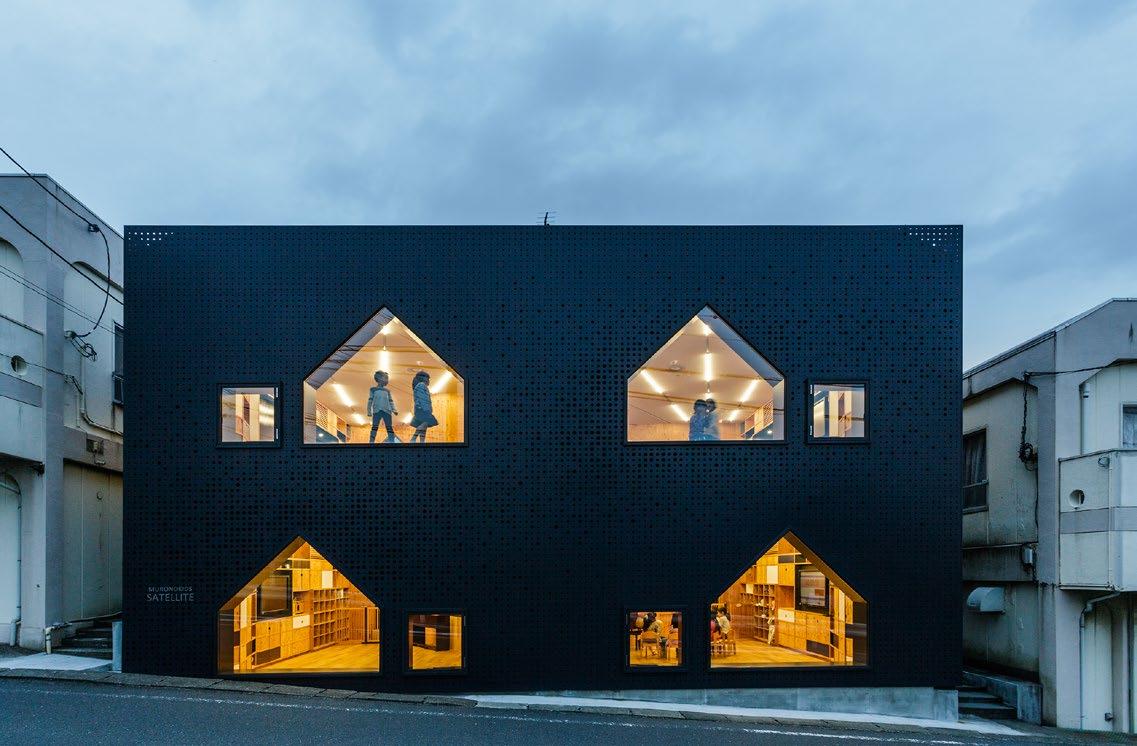
A base created from a residential building with an attached shop MK-S Nursery is located in a residential district in Japan’s Yokohama, a city close to Tokyo. MK-S Kindergarten, the parent institution, sought a facility that would be able to serve as a preschool and an after-school childcare center for its students, and opted to renovate the building across the street and appropriately transform it into a suitable center equipped to the task.
The original structure was a 40-year-old
wooden house with a shop on the first floor and a residence on the second floor. To fulfil the requirements for a preschool and an after-school childcare, two adjacent buildings were partially reinforced and repaired to form a facility with four classrooms. As the facility is a subsidiary of the kindergarten across the street, its design theme follows the kindergarten’s design concept, “Satellite” to create a relation through appearance. This allows the facility to draw out a background link to the kindergarten, but also
QKK Nursery
Kanagawa, Japan
A nursery school with a garden that stimulates children’s senses
The building of this nursery was originally a stand-alone Italian restaurant that was converted—together with its attached garden—into a licensed nursery for thirty-four infants. To work within a modest budget, changes to the exterior were limited, and priority was directed toward areas that needed refurbishing.
Part of that included maintaining the original interior partitions and unifying them using wood and steel. Play spaces, named “Houses,” are incorporated throughout the school to nurture children’s development by encouraging the use of all their senses when playing. For
completion: 2016
area: 1,614 ft² (150 m²)
photography: Ryuji Inoue / studio BAUHAUS
10th Kids Design Award
example, the Artist House has a blackboard floor that children can freely draw on; the Music House has a floor that emits sound when stepped on or pressed; and The Good Smell House is filled with the fragrance of dried flower bouquets and wood.
As interacting with nature has been known to help nurture a child’s mental and emotional stability, the exterior courtyard has been transformed into a small garden with a vegetable patch and flowering plants. This connects the children to a richly green environment that calms their sense while it helps teach them about gardening, nature, plant/animal life-cycles, and even the food they eat, instilling an appreciation of the nature around them.
